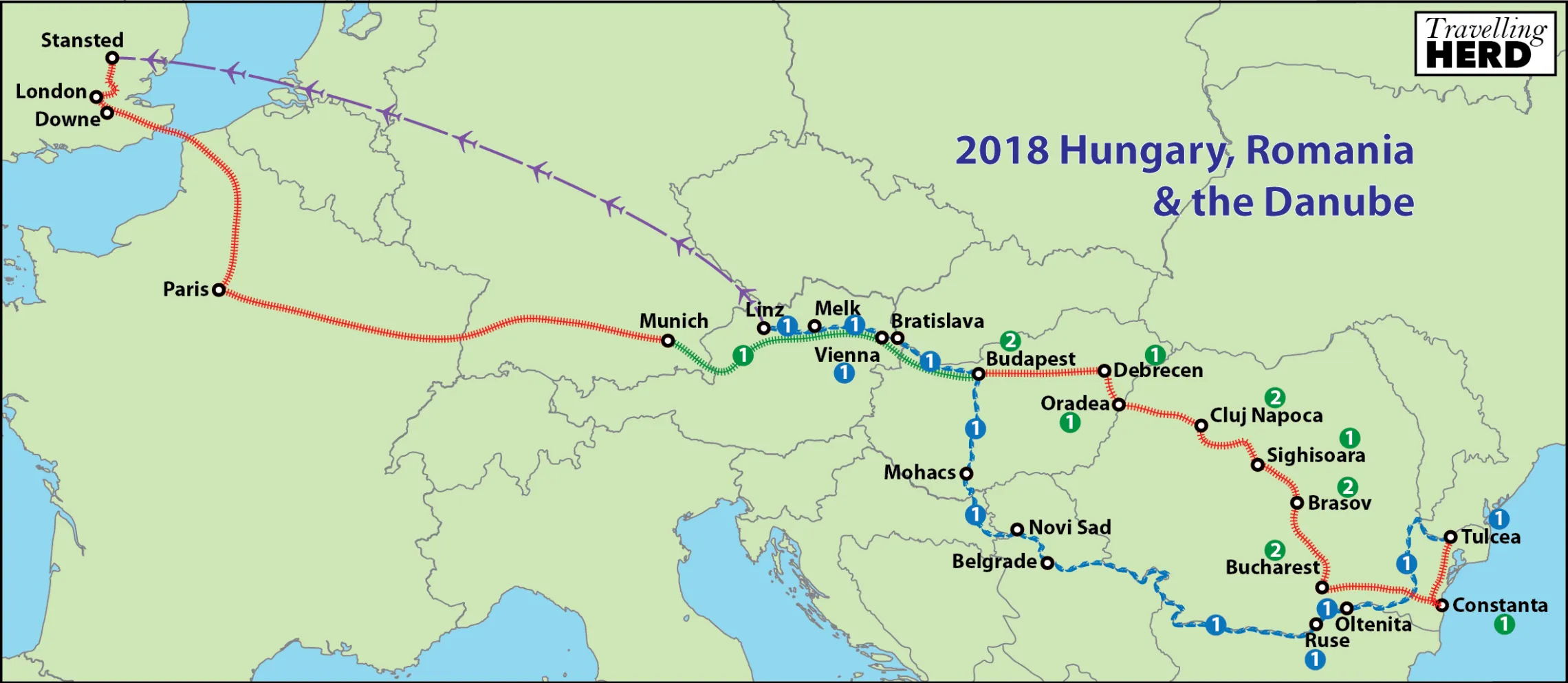Sunday, 26th August 2018
This morning we had to go through passport control on board the boat to enter Hungary. This involved completing a declaration the night before about the amount of alcohol, cigarettes and currency we were bringing into the country and presenting ourselves to the customs officers in an orderly fashion in the morning. A cursory glance at our passports seemed to be all that was required.
The weather has broken and the temperature is a chilly 21 degrees. Since the sun deck loses some of its allure in these temperatures, Ruth, Matilda and Jaime all decided to join the excursion to the Puszta area to see the Hungarian horsemen in action. Robert remained on board, hoping to arrive at the pick up point in time to have a look round the town.
We were moored alongside another boat and had to walk through it to disembark. This seems to be a slightly more luxurious vessel than ours and Jaime wanted to jump ship.
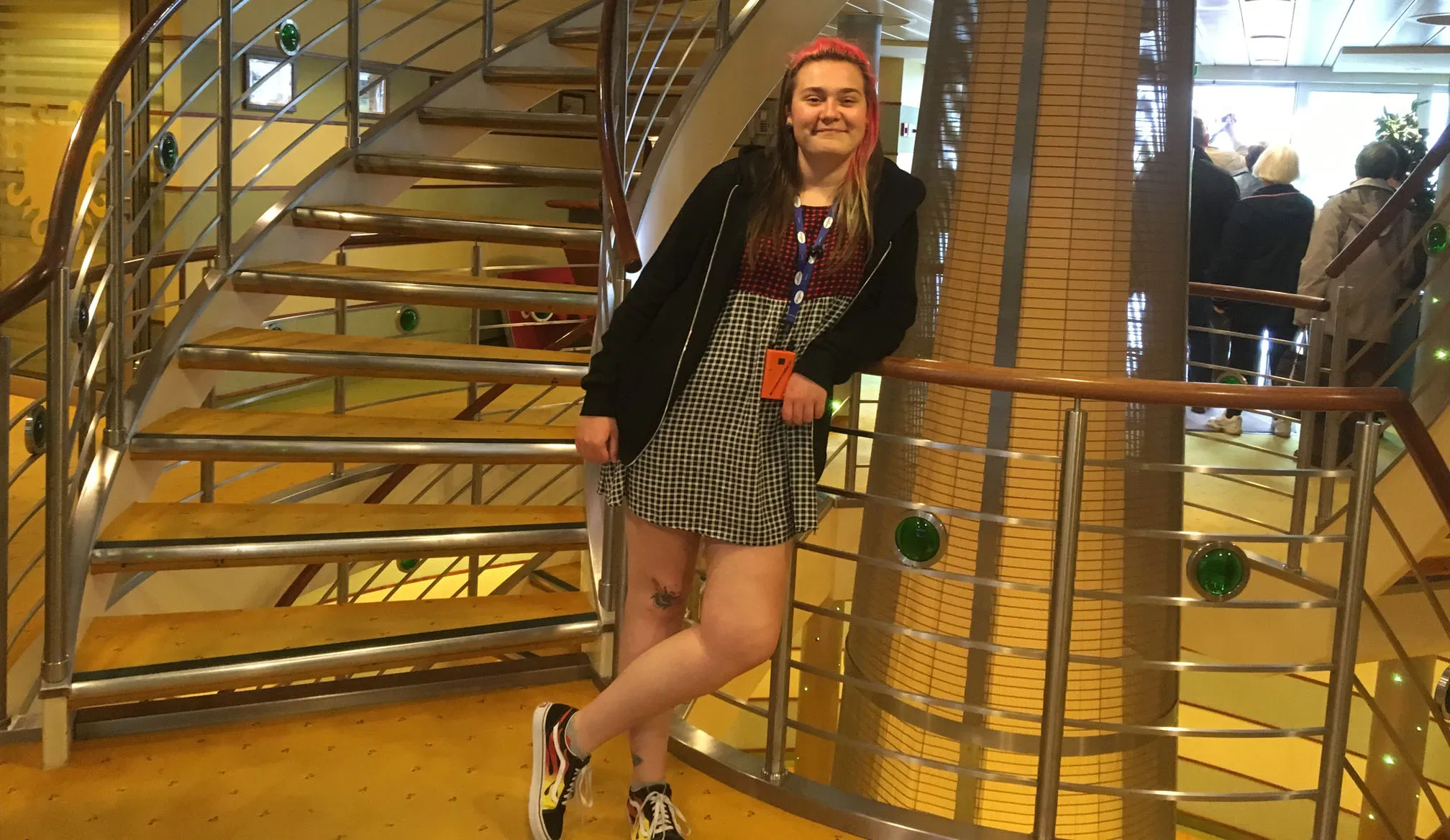
The tour started with a visit to a traditional Hungarian home with painted walls and hand embroidered
cloth and clothes. Ironically, given the current water level, houses were built on a slight mound to protect it from potential flooding from the Danube.
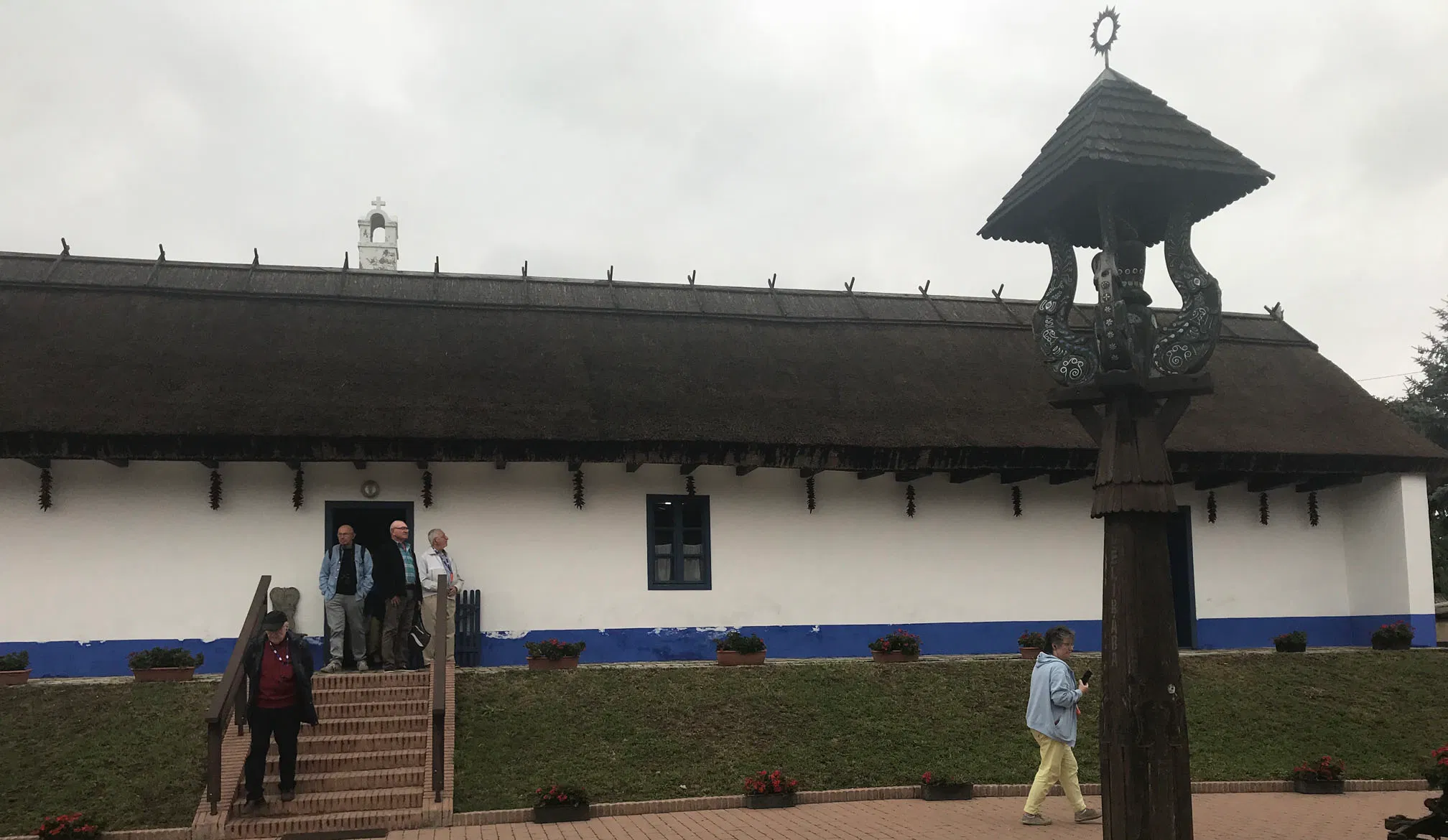
From here on to the paprika museum at Kalocsa: as a key ingredient in goulash paprika is grown extensively in this region. Dr Albert Szent-Gyorgyi [1893 – 1986] first isolated vitamin C and found that paprika provides a rich source. He was awarded the Nobel Prize for his work in this area in 1937 and offered all the prize money to Finland in 1940, after the Soviet Union invaded in 1939.
From Kalocsa we were taken to Bakod Puszta to see the horsemen of the Hungarian plains display their considerable horsemanship and wagon driving skills. The men are dressed like Cossacks and provide a whip cracking display whilst riding without girths – the saddles are not secured in any way. The horses have been trained to ignore the sound of the whips, to sit like a dog and to lie down. Originally this last skill would have been a useful in avoiding detection on the flat plains of the region.
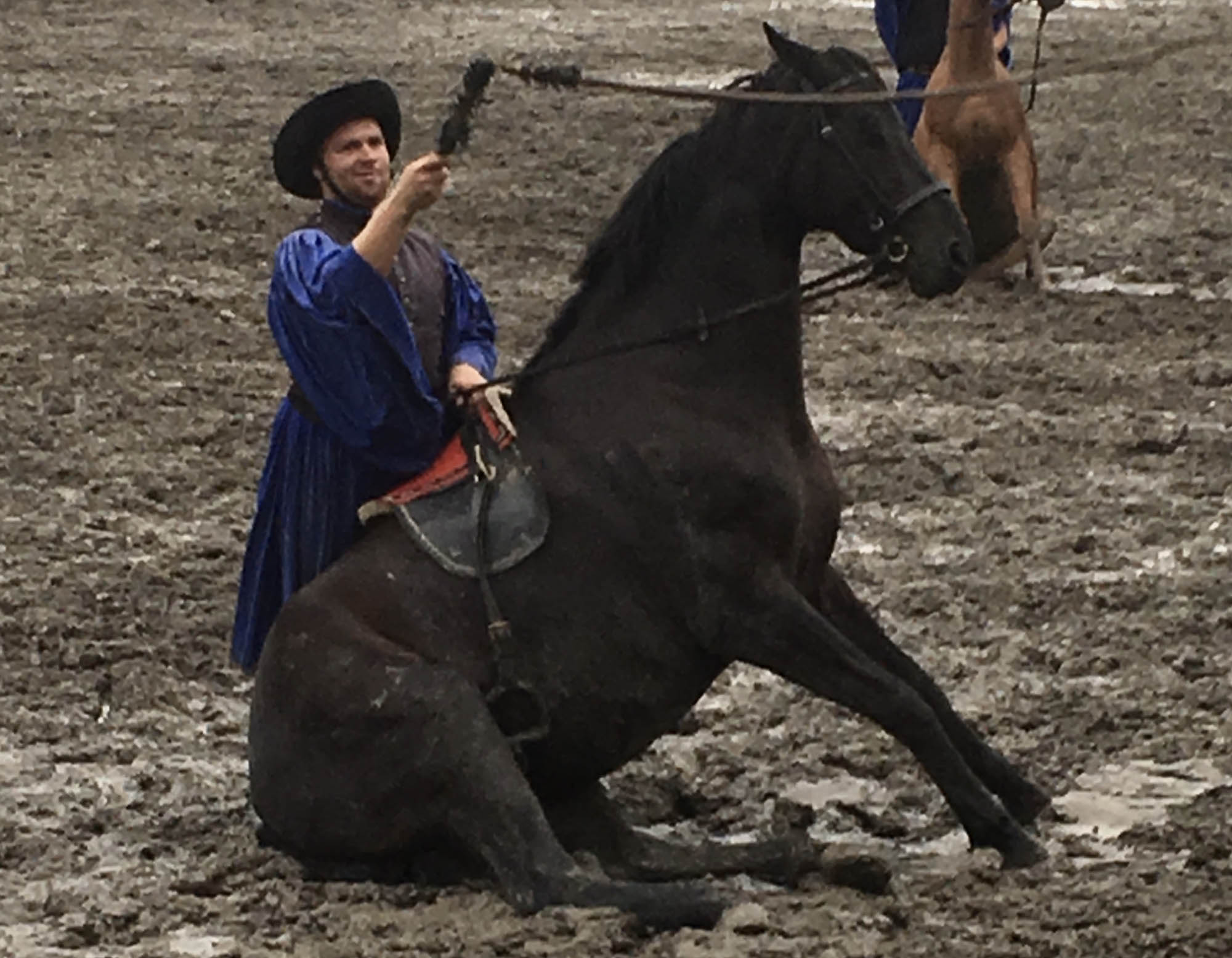
They also stage a traditional game which is reminiscent of medieval knights vying for a lady’s favour as it involves trying to take a scarf from each other as they ride round the arena. In the past, the winner would have been crowned King of Whitsun and would be able to drink for free in the local pub for one year.
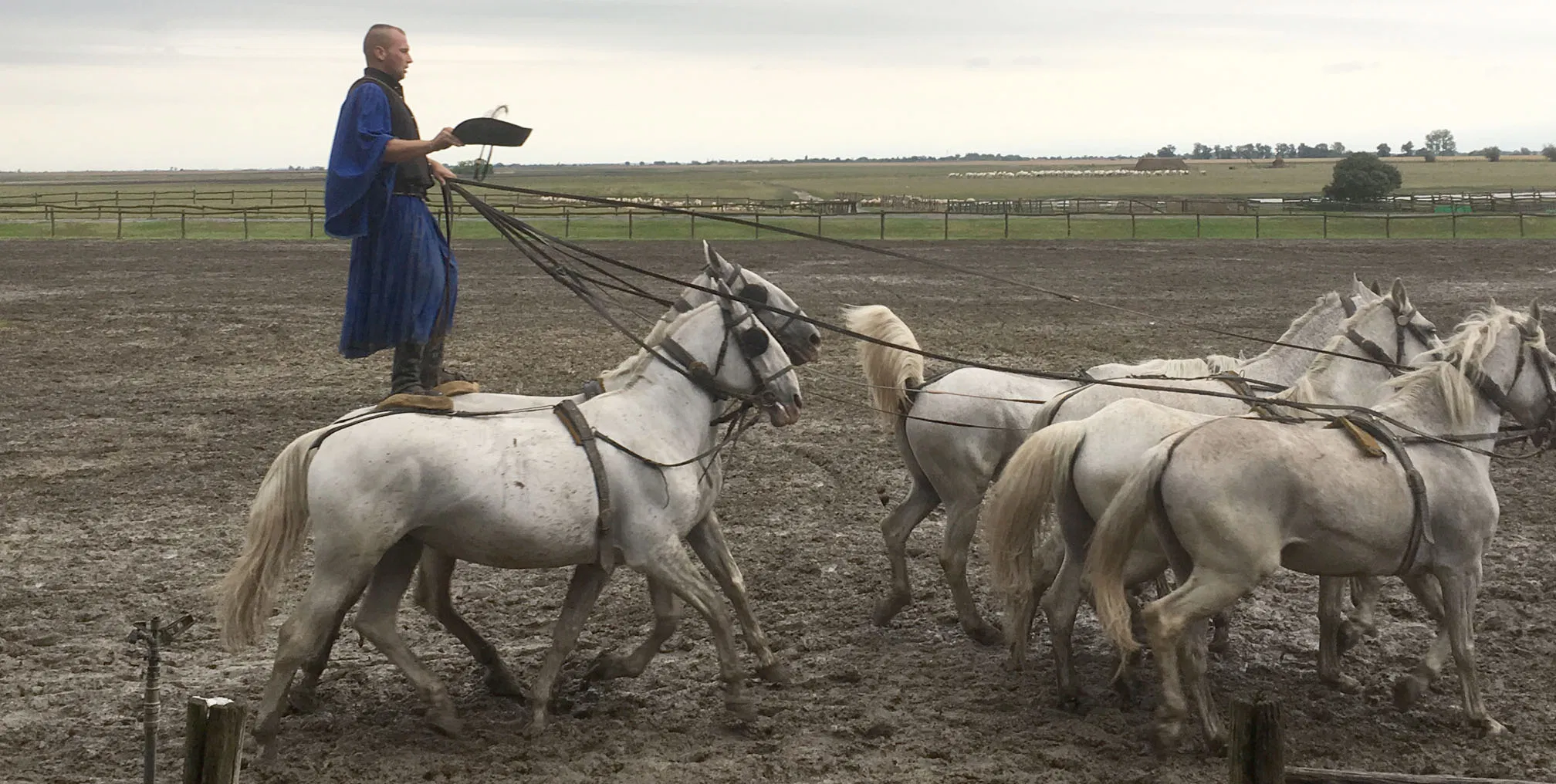
Finally one man drives a team of ten horses standing with one foot on each of the two animals at the back [see picture at the top].
After the show you can walk through the stables, which also housed some curly haired Hungarian piglets, and take a very brief ride round the fields to see the grey cattle and the sheep with curly horns. The animals in the stables are obviously well cared for and friendly. It is important to preserve a nation’s cultural heritage. However, as with many shows which feature trained animals, the spectacle is obviously carefully choreographed and you have to wonder whether this is the best we can do for these noble animals in a modern age.
Unfortunately the captain informed us at dinner that, due to the exceptionally low water levels in the Danube, the Hungarian government has decided to stop boats travelling at night on a stretch of the river between Novi Sad and Budapest. In the areas with the lowest water level, there is just 30cm clearance below our boat. This means that we cannot cruise through the night to arrive in Budapest tomorrow morning. Instead, the boat will moor up and leave at 02:00 to arrive at the restricted section for 05:00 when travel is permitted. We will therefore only have half a day in Budapest and will not be able to return to the Gellert baths for a swim. However, we are still comparatively lucky as vessels with a deeper draft have been stranded and the boat we moored against had not moved for 12 days. Just as well Jaime didn’t jump ship.
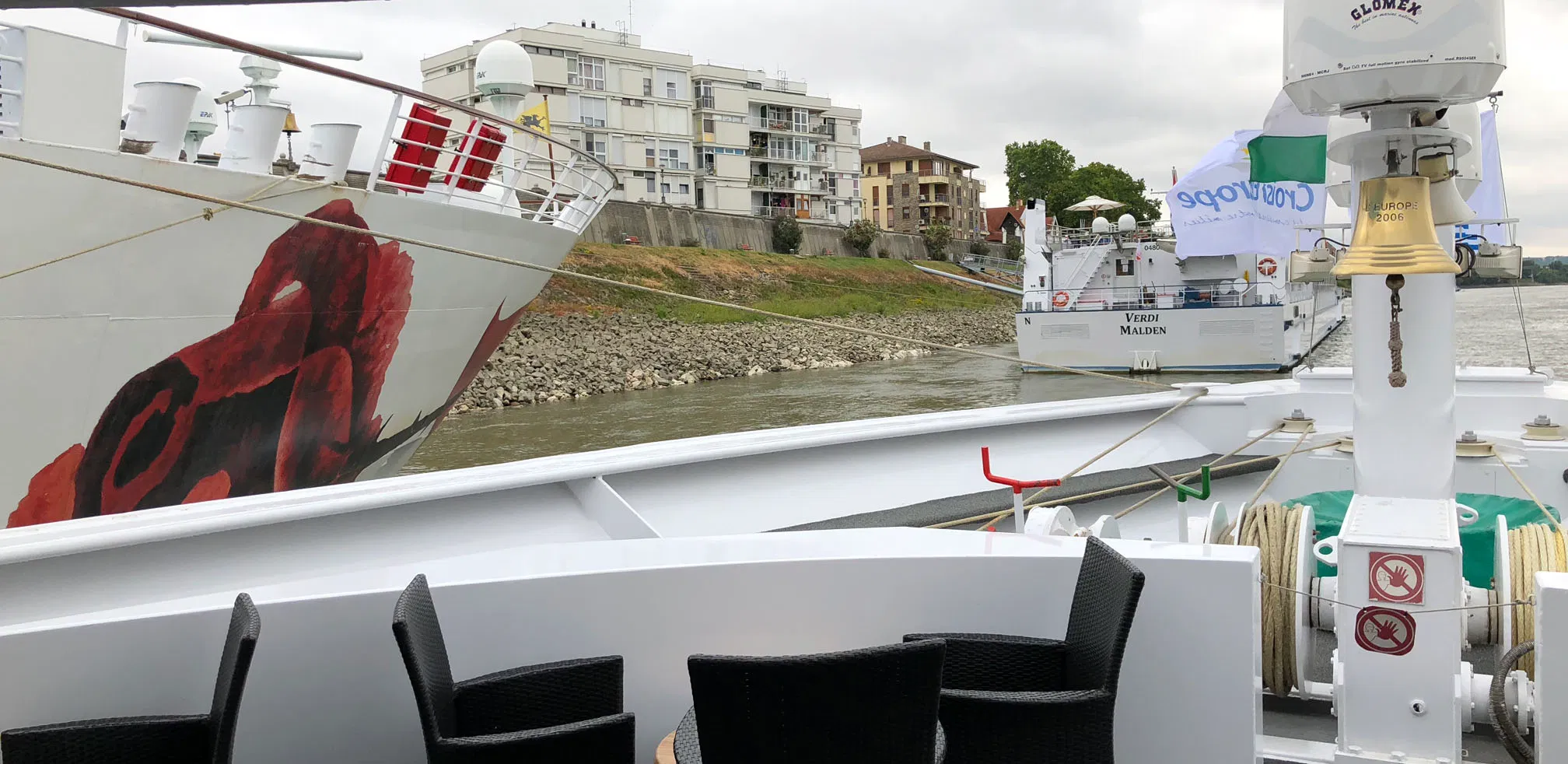
Ruth tries out her whip skills.
Miles walked today: 1.8
Route Map:
